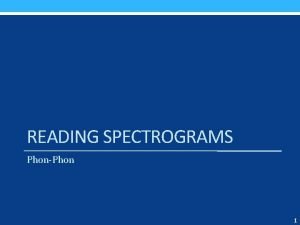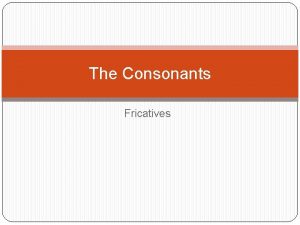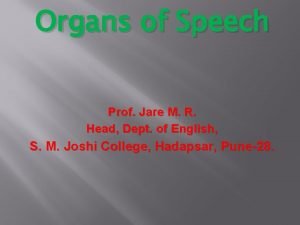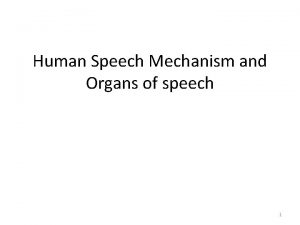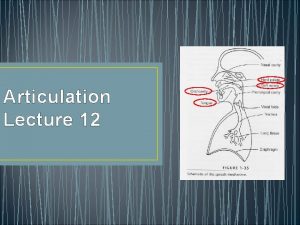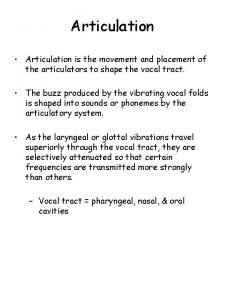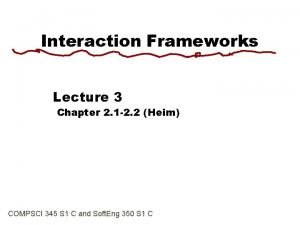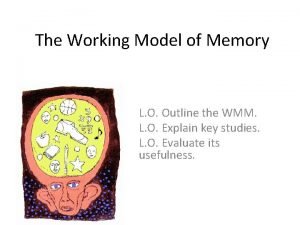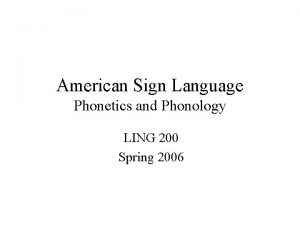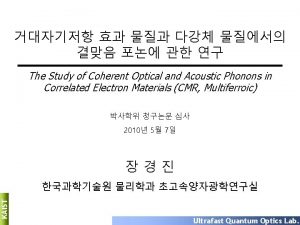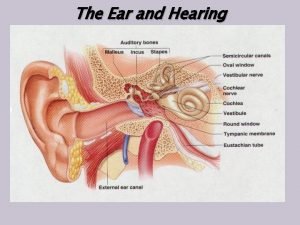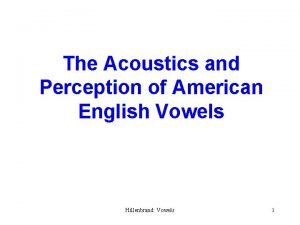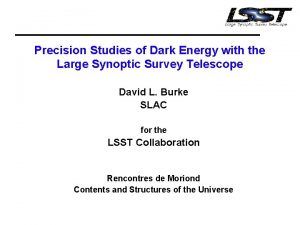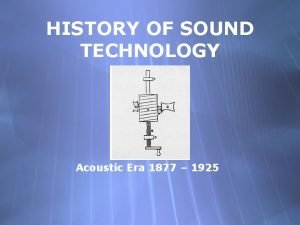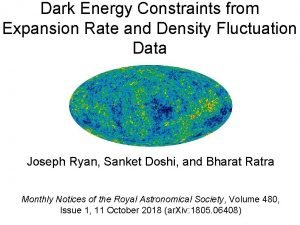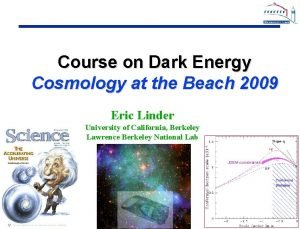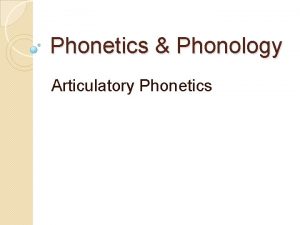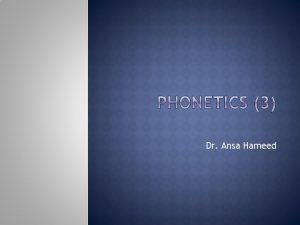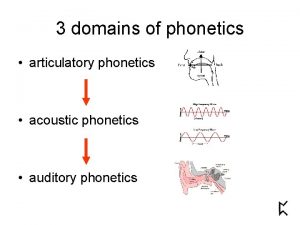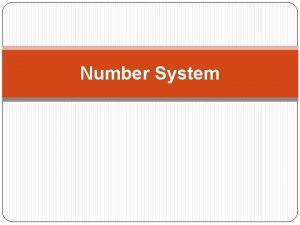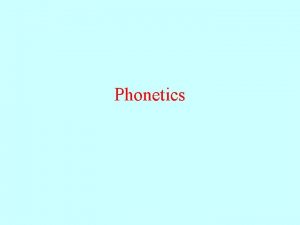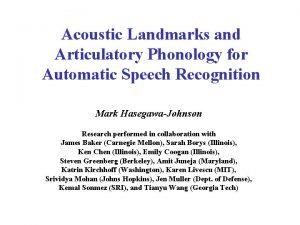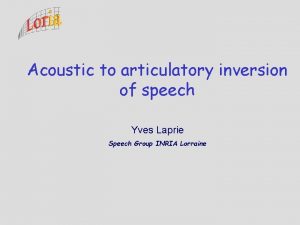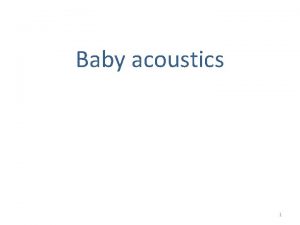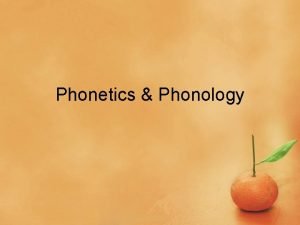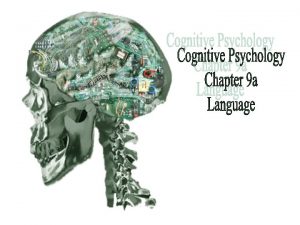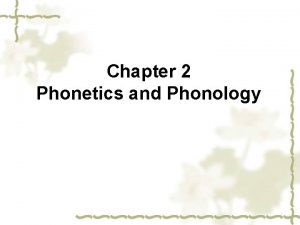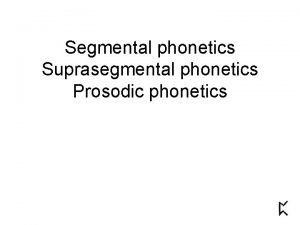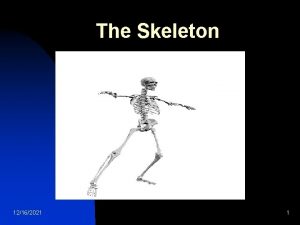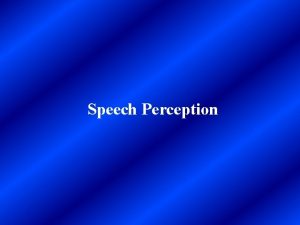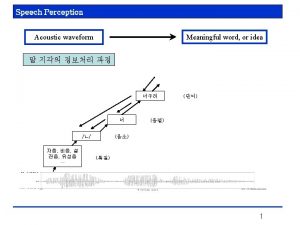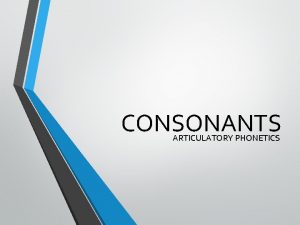12162021 Language Speech perception Acoustic Phonetics Articulatory Phonetics





















- Slides: 21


12/16/2021 • Language » Speech perception ◊ Acoustic Phonetics ◊ Articulatory Phonetics ◊ Top-down processes Study Question. • Compare and contrast acoustic and articulatory phonetics

Language • Phonology: The rules underlying production and comprehension of speech. • Phonetics: The nature of linguistic sounds. » Articulatory phonetics: Placement of the mouth, tongue, lips, etc. used to produce particular sounds. » Acoustic phonetics: Physical characteristics of speech sounds. ◊ The Speech Spectrograph

Language • Some Basics Compression » Qualitative and quantitive elements of sensory stimuli High Low

Language • The Speech spectrograph

Language • Acoustic Phonetics » Phoneme: The smallest unit of speech that if changed would change the meaning of a word. E. g. , “Pit” ----> /b/+/I/+/t/ = “bit” /p/ + /I/ + /t/ /i/ /p/+/i/+/t/ = “peat” /g/ /b/+/I/+/g/ = “pig”

Language i I e æ u U o c a e sip s zip z rip r s should z pleasure c chop j gyro yip y k kale g gale h hail h sing V p pull b bull m man w will f fill v vet q thigh o thy t tie d die n near l lear Vowels ' Consonants i heed hid bait head boot put boat bought hot sofa many

Language • Articulatory Phonetics » Three ways in which consonants differ. 1. Place of articulation – – – – Bilabial --> /p/ Labiodental --> /f/ Dental --> /Q/ Alveolar --> /z/ Palatal --> /ˆz/ Velar --> /k/ Glottal --> /h/

Language • Articulatory Phonetics » Three ways in which consonants differ. 2. Manner of articulation – – – Stops --> /b/ Fricatives --> /s/ Africatives --> /j/ Nasals --> /m/ Lateral --> /L/ Semivowels --> /r/ 3. Voicing ◊ Vibration of vocal chords

Language • Articulatory Phonetics » Voicing

Language • Articulatory Phonetics » Is speech special? ◊ Specialized neural mechanisms for perceiving speech. – Categorical perception Voice onset-time and distinguishing /d/ from /t/

Language • Articulatory Phonetics » Vowels ◊ Positioning and part of tongue – Height High (/i/ beet) Med (/e/ bait) Low (/a/ pot) – Part Front (/I/ bit) Central (but) Back (/o/ boat)

Language • The search for invariants » Distinctive features ◊ Chomskey & Halle (1968) – The Sound Pattern of English 5 groups of features ◊ Miller & Nicely ◊ Articulatory features » Problems with a simple bottom-up approach ◊ There are no periods of silence between phonemes

Language • The search for invariants » Phonemic information is presented in parallel ◊ Coarticulation ◊ E. g. Cf. /M/ in “Tim” vs. “/M/ in “mad” » We perceive them as the same, but they are different » We perceive the same sound differently according to the context ◊ E. g. : Writer vs. Rider ◊ E. g. : Insert a silence between /s/ and /i/ --> “ski” Insert a silence between /s/ and /u/ --> “spew”

Language • Top down processes » Phonemic restoration effect (Warren, 1970) ◊ Their respective legi*latures ◊ Found a *eel on the axle ◊ Found a *eel on the shoe

Language • Perceiving conversational speech » Two main problems: 1. There are no physical boundaries between words – Anna Mary candy lights since imp pulp lay thing 2. Speech is sloppy – -> Misheard Lyrics – -> This was the best buy vs. She is a bad girl

Language • Perceiving conversational speech » Two main problems:

Language What are you doing ?

Language Whad’ya doin’?

Language • Top-down processes and speech perception » Phonemic perception ◊ The Mc. Gurk Effect » Sentence comprenension ◊ Miller & Isard (1963) – Participants shadow sentences: Grammatic: Bears steal honey from the hive. Semantically incorrect: Bears shoot honey on the highways. Ungrammatic: Across bears eyes honey the bill.

Language • Top-down processes and speech perception ◊ Miller & Isard (1963) – Results No noise Mod. Noise Gram. 89% 63% Nonsem. 79% 22% Nongram. 56% 3%
 Fricatives
Fricatives Articulatory description
Articulatory description Articulators in phonetics
Articulators in phonetics Jare head
Jare head Articulatory organs
Articulatory organs Panalogy
Panalogy Diagastricus
Diagastricus Anterior posterior pillars
Anterior posterior pillars Semantic and articulatory distance
Semantic and articulatory distance Articulatory suppression
Articulatory suppression Place of articulation consonants
Place of articulation consonants Phonetic speech sounds
Phonetic speech sounds Characteristics of sign language
Characteristics of sign language Optical vs acoustic phonons
Optical vs acoustic phonons What is the function of the external acoustic meatus
What is the function of the external acoustic meatus Vowel quadrilateral
Vowel quadrilateral Baryon acoustic oscillations
Baryon acoustic oscillations Acoustic era
Acoustic era The universe expanding faster should
The universe expanding faster should Baryon acoustic oscillations
Baryon acoustic oscillations Baryon acoustic oscillations
Baryon acoustic oscillations Acoustic technician
Acoustic technician
